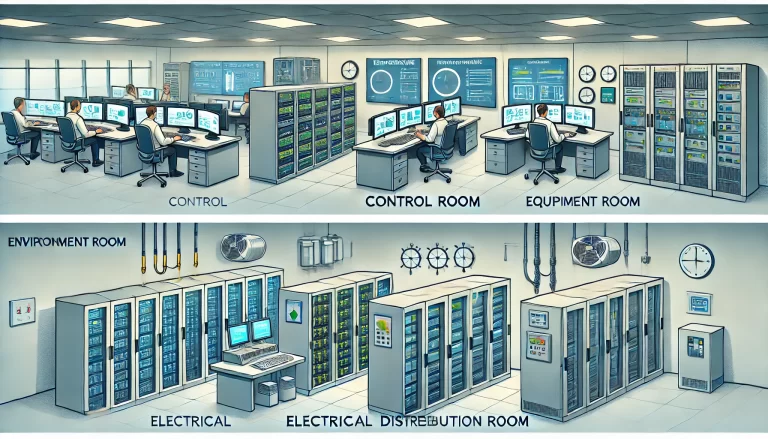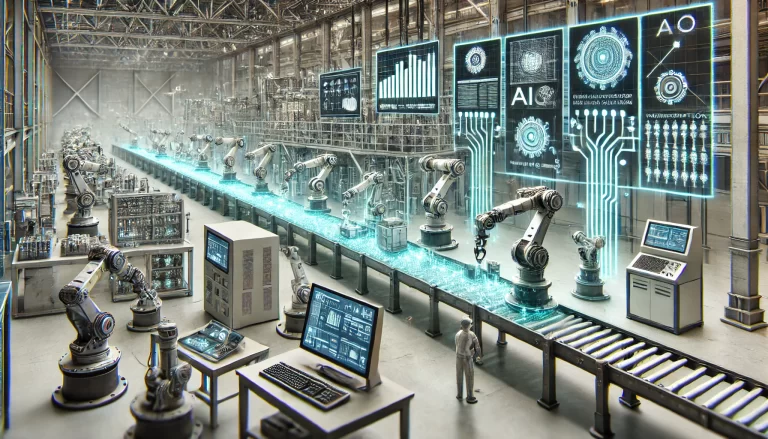A Manufacturing Execution System (MES) is a crucial production management system designed for manufacturing enterprises. It connects the enterprise’s planning layer (ERP) with the on-site control layer (PLC, SCADA, etc.), enabling real-time monitoring of production processes, data collection, quality management, and process execution. The main goal is to improve production efficiency, product quality, and responsiveness.

1. Key Functions of MES
The MES system encompasses several critical modules, each of which plays a vital role in managing production. The main functions include:
1.1 Production Planning and Scheduling
- MES receives the production plans from ERP and breaks them down into executable work orders.
- The system optimizes production scheduling based on equipment status, personnel assignments, and material availability.
- It provides real-time feedback to adjust production progress as needed.
1.2 Production Process Management
- Records the execution of each process, including operator information, equipment usage, and process parameters.
- Real-time monitoring of the production process helps identify any abnormal conditions immediately.
- Tracks the production history of each product to ensure traceability.
1.3 Material Management
- Monitors the use of materials to prevent shortages or overstocking.
- Materials are tracked using barcode or RFID technology, ensuring precise tracking.
- MES integrates with warehouse management systems (WMS) to optimize material flow across production.
1.4 Quality Management (QA/QC)
- Defines quality standards and conducts online inspections and statistical analyses.
- Records defective product information, facilitates root cause analysis, and ensures traceability.
- Implements Statistical Process Control (SPC) to analyze quality trends and provide early warnings of potential issues.
1.5 Equipment Management
- Monitors the operational status of equipment and records key operational parameters.
- Maintains equipment maintenance schedules to avoid unexpected breakdowns.
- Uses Overall Equipment Efficiency (OEE) analysis to improve equipment utilization.
1.6 Production Data Collection
- Collects production data through PLCs, sensors, and other automated systems.
- Records operator input information to complement automated data.
- Real-time data analysis supports decision-making processes.
1.7 Performance Analysis and Reporting
- Calculates key performance indicators (KPIs) such as OEE, production yield, and downtime.
- Provides real-time data reports to assist management in optimizing decisions.
- Integrates Business Intelligence (BI) tools for deeper analysis of production performance.
1.8 Traceability and Traceability Records
- Records the complete production history from raw materials to finished products.
- Enables rapid identification of defective batches or production issues when quality problems arise.
- Especially critical in industries like food, pharmaceuticals, and automotive, where regulatory compliance requires traceability.

2. MES System Architecture
MES typically operates on a three-tier architecture:
2.1 Data Collection Layer
- Comprises devices like PLCs, SCADA systems, sensors, and RFID tags.
- Responsible for gathering production data such as temperature, pressure, and equipment status.
2.2 Business Logic Layer
- Includes MES servers, databases, and application modules.
- Handles critical business logic such as production scheduling, material management, and quality control.
2.3 User Display Layer
- Provides multiple access points, including web interfaces, PC clients, and mobile applications.
- Allows operators, team leaders, and management to view real-time data and insights on the production floor.
3. The Relationship between MES, ERP, SCADA, and PLM
MES acts as a central hub in an enterprise’s information architecture, linking various systems and ensuring smooth data flow:
| System | Main Functions | Relationship with MES |
|---|---|---|
| ERP (Enterprise Resource Planning) | Manages production planning, financials, and supply chain | MES receives production plans from ERP and provides execution feedback |
| SCADA (Supervisory Control and Data Acquisition) | Monitors devices and collects production data | MES collects real-time production data from SCADA systems |
| PLM (Product Lifecycle Management) | Manages product designs, Bill of Materials (BOM) | MES uses data from PLM systems to guide production execution |
4. Industry Applications of MES
MES is widely applicable in both discrete and process manufacturing industries. Common industries include:
- Automotive Manufacturing: Production traceability and quality management are crucial for ensuring compliance with industry standards and regulations.
- Electronics Manufacturing: MES helps achieve lean production, optimize material management, and reduce production time.
- Food & Beverage: Critical for batch management and regulatory traceability of production processes.
- Pharmaceutical Industry: Ensures compliance with GMP (Good Manufacturing Practices) and helps manage batch production and quality control.
- Aerospace: MES is used for process management, regulatory compliance, and supply chain optimization.

5. Challenges in Implementing MES
While MES offers numerous benefits, its implementation often comes with certain challenges:
5.1 System Integration Complexity
- MES must be integrated with other systems such as ERP, SCADA, and WMS, which requires careful planning.
- Ensuring compatibility between devices from different manufacturers is critical for smooth system operation.
5.2 Data Quality and Standardization
- Production data needs to be standardized for efficient analysis and decision-making.
- Accurate data such as BOM and process routes must be established to ensure the system functions correctly.
5.3 Change Management
- Implementing MES may change existing production processes and employee workflows.
- Comprehensive training and cultural change management are essential for smooth adoption.
5.4 Cost Investment
- MES requires investments in software, hardware, and human resources.
- Customization is often needed to tailor the system to specific enterprise needs, which can lead to additional costs.

6. Future Trends in MES
The future of MES is shaped by several emerging trends in manufacturing technology:
6.1 Cloud-Based MES
- Utilizing cloud computing architecture reduces deployment costs and enhances scalability.
- Cloud MES can provide better flexibility and remote access for global production teams.
6.2 Integration with Industrial Internet of Things (IIoT)
- The combination of IIoT, 5G, and advanced sensors allows for more granular and real-time data collection on the production floor.
6.3 AI and Big Data Analytics
- MES systems are integrating AI algorithms to optimize production scheduling and enhance predictive maintenance capabilities.
- Big data analytics will provide deeper insights into production processes, further driving efficiency improvements.
6.4 Smart Manufacturing and Digital Twins
- MES, combined with digital twin technologies, enables the creation of virtual factories for advanced simulation and optimization.
- This integration supports smarter decision-making and process improvements by providing real-time insights into factory operations.

Conclusion
MES is a key system for modern manufacturing enterprises, enabling lean production, improving efficiency, and enhancing quality. By enabling real-time data collection, production management, quality control, and equipment monitoring, MES bridges the gap between enterprise resource planning (ERP) systems and the shop floor. As industries continue to embrace digital transformation, MES will increasingly integrate with advanced technologies like cloud computing, AI, and IIoT to further streamline manufacturing processes and drive operational excellence.
